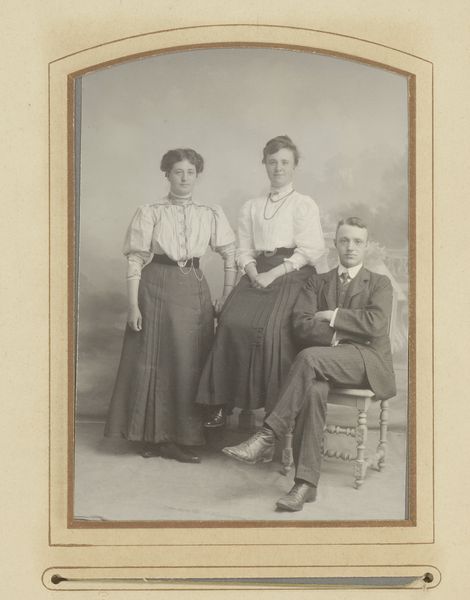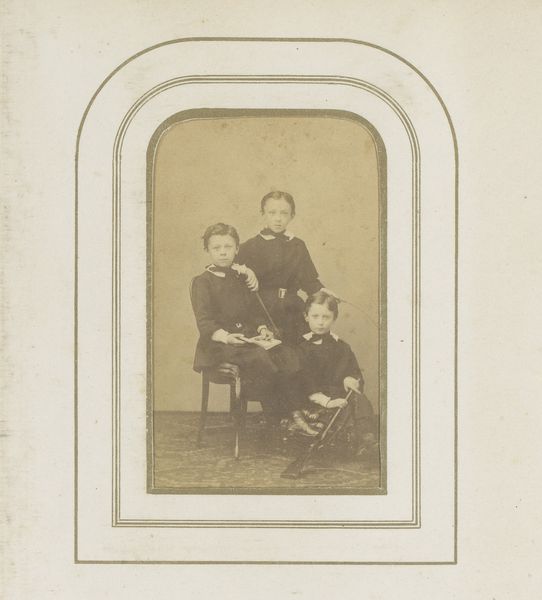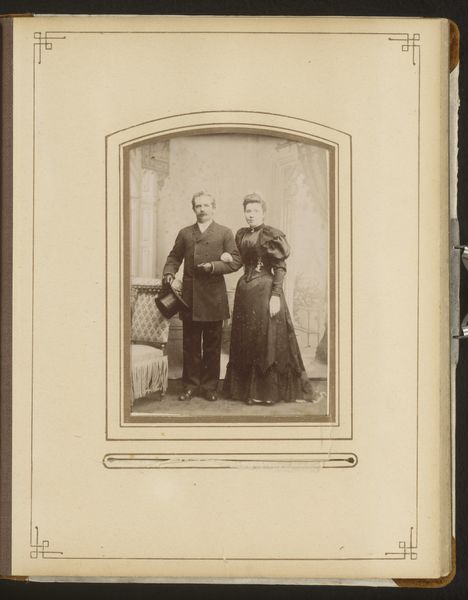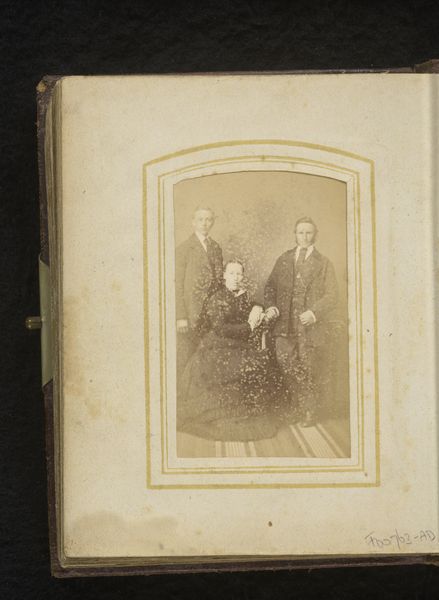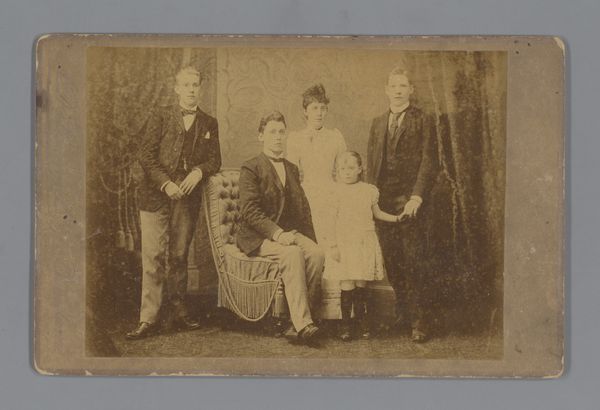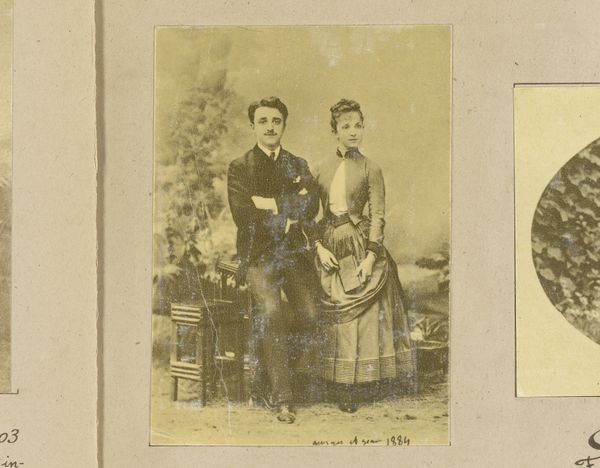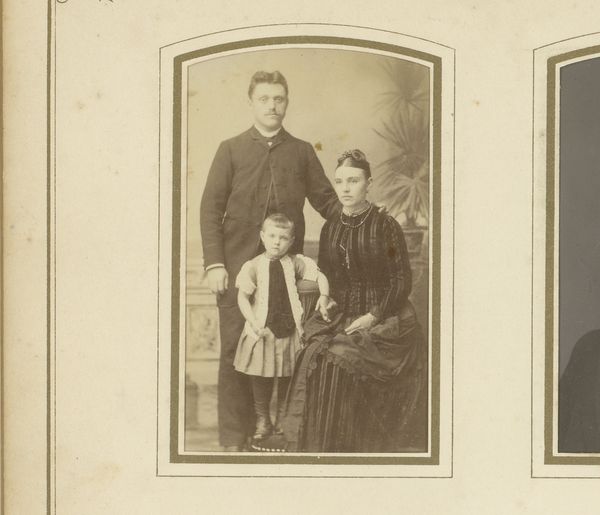
photography
#
portrait
#
photography
#
historical photography
#
group-portraits
#
19th century
Dimensions: height 84 mm, width 50 mm
Copyright: Rijks Museum: Open Domain
Curator: This intriguing photograph is titled "Portret van drie jonge vrouwen," which translates to "Portrait of three young women." It was created by J. Siewers & Zoon sometime between 1890 and 1910. Editor: There's a palpable sense of self-possession radiating from these women, a defiance of the expected passivity we often associate with women in photographs from this period. Their clothing and poses – the bow ties and confident expressions – immediately made me curious about their individual identities. Curator: The image, as you observe, is particularly intriguing within its socio-historical context. Group portraits, particularly of women, served varied functions. On one hand, this photographic portrait could function as a celebration of female companionship and independence, hinting at shifting gender roles at the time. We see each of them sporting slightly more masculine or academic garments that might indicate something of the life or intention each woman sought for herself, professionally or even romantically. Editor: Precisely! The woman on the right, with her tailored suit and bold tie, appears especially forward-thinking. Could this image signal a challenge to conventional Victorian notions of femininity, a reclamation of public space? It appears less ornamental than perhaps intended by turn-of-the-century photographers. Curator: It's not merely speculation to ask whether this photograph embodies those nascent feminist ideals. The visual language of photography allows these women to craft their narrative. Do they see themselves outside of marriage, embracing academic or professional pursuits previously deemed male territories? We could think of what it meant, culturally and professionally, to sit before a camera for a photo in this manner and understand it as not merely capturing women together, but the possibilities they represented collectively. Editor: Viewing them together is paramount here. This photograph resists portraying women as decorative objects, or wives or daughters or extensions of the nuclear family, presenting a visual of sisterhood. In its very composition and choice of apparel, there's a conscious rebellion at play that reframes historical conventions. Curator: Absolutely. The way they choose to be seen becomes, in itself, a powerful social and political act. The deliberate choice to pose in this manner before a camera alters, challenges, or, to invoke our discussion, defies public conventions of what a photographic portrait of three women can even begin to represent. Editor: Ultimately, what's exciting is how a simple photograph becomes a window into the evolving possibilities of female identity and collaboration during a critical juncture in history, even inviting further research into the socio-economic backgrounds and perhaps local relevance for all of the sitter’s involvement in such an act.
Comments
No comments
Be the first to comment and join the conversation on the ultimate creative platform.

